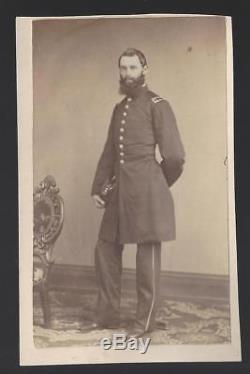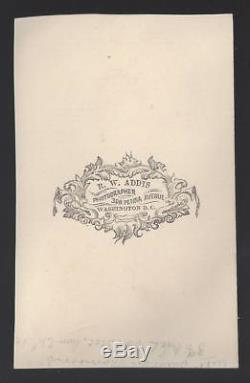
- Homepage
- Conflict
- Format
- Albumen (3)
- Ambrotype (32)
- Cabinet Card (67)
- Cdv (5)
- Crayon Portrait (2)
- Daguerreotype (27)
- Hardcover (14)
- Multi-formats (6)
- Negative Photo Image (4)
- Photograph (6)
- Ruby Ambrotype (3)
- Sixth Plate (2)
- Small (2)
- Stereoview (3)
- Tin Type (8)
- Tin Type Photo (2)
- Tintype (157)
- Tintype Photograph (6)
- Unknown (9)
- ... (6650)
- Photo Type
- Album (9)
- Albumen (14)
- Ambrotype (199)
- Cabinet Photo (67)
- Cdv (479)
- Cdv & Tintype (6)
- Cdvs & Tintypes (7)
- Daguerreotype (84)
- Gelatin Silver (13)
- Mixed (3)
- Negative (10)
- Negative Photo (4)
- Opalotype (4)
- Other (4)
- Photograph (4)
- Snapshot (3)
- Stereoview (23)
- Tintype (525)
- Tintypes (3)
- Unknown (12)
- ... (5535)
- Theme
- Americana (41)
- Americana, Fashion (18)
- Americana, Militaria (17)
- Antique (8)
- Art (7)
- Civil War (14)
- Conflicts & Wars (6)
- Fashion (19)
- History (43)
- History, Militaria (10)
- Love (6)
- Militaria (1033)
- Patriotic (7)
- People (21)
- Politics (14)
- Portrait (67)
- Portrait, Man (22)
- Stamps (22)
- Travel (6)
- Victorian (7)
- ... (5620)
- Type
- Belt Buckle (3)
- Carte De Visite (2)
- Cdv (3)
- Cdv Photograph (14)
- Daguerreotype (3)
- Full Cdv Photo Album (2)
- Illustrated Book (3)
- Negative Film Photo (4)
- Pendant (3)
- Photo Album (3)
- Photo Frame (2)
- Photograph (1350)
- Photograph Album (49)
- Picture Book (8)
- Picture Frames (8)
- Print (3)
- Real Photo (rppc) (10)
- Tintype (9)
- Tintype Photo (4)
- ... (5525)
- Unit Of Sale
Civil War CDV Union Asst Surgeon & Hospital Steward Walter B Morrison 3rd Mich




Standing view of Hospital Steward and Asst Surgeon for the 3rd Michigan Vols Walter B Morrison of Grand Rapids Mich. Period id on verso and will be accompanied by a copy of a ink signed view headshot also. The famed 3rd Served in the Army of the Potomac and saw heavy action in most of its battles.
At 8:30 on the morning of Thursday, June 13, 1861, ten companies of the Third Michigan infantry, led by its regimental band and the field and staff officers, left their quarters at Cantonment Anderson on the site of the Kent county agricultural fairgrounds, about two and a half miles south of the city of Grand Rapids, Michigan. The Third Michigan marched north up the Kalamazoo Plank road (present-day Division street) into the city, turned down Monroe street to Canal street and headed north to the Detroit & Milwaukee railroad depot, near what is today the corner of Plainfield and Leonard streets. Upon reaching the train station, the men boarded two special trains heading east, passing through Ada, St. Johns, Owosso, Pontiac and terminated in Detroit, where the Third Michigan was feted by the citizens.The Regiment then boarded two boats for a night cruise to Cleveland, Ohio. From Cleveland they went by rail to Pittsburgh, Pennsylvania and then on to Harrisburg, Baltimore, Maryland, and finally arrived in Washington, DC, on Sunday June 16. They were tired, hungry and weary when they marched to Chain Bridge just above Georgetown on the Potomac river, where they set up their first wartime encampment on the bluffs overlooking the river.
The camp was first called Camp McConnell (after the colonel of the regiment) but then quickly changed to Camp Blair (after Austin Blair, then governor of the state of Michigan). The bands, the crowds, the patriotic fervor of late April soon give way to war's harshest reality: death. The first man to die was William Choates of C company, who died on July 1, 1861, not amidst the glories of battle but in the throes of fever. He was buried near Camp Blair, and is presumably buried there still. The regiment's baptism into war came less than three weeks later in the action at Blackburn's Ford on July 18, 1861, a prelude to the first battle of Bull Run on July 21.
The Third suffered its first wartime casualty early on Saturday morning, July 20, 1861, when Homer Morgan of Company B allegedly took his own life. The Third Michigan infantry covered the retreat of the federal troops from Bull Run on July 21, and subsequently went into a succession of camps around Washington throughout the fall and winter of 1861-62. The regiment participated in McClellan's Peninsular campaign of 1862 and suffered its worst casualties to date at the Battle of Seven Pines, Virginia, on May 31, 1862, and at Groveton (or Second Bull Run) on August 29, 1862. The Third Michigan infantry played a peripheral part in the battle of Fredericksburg on December 13, 1862. The next major action for the regiment was at Chancellorsville, Virginia, on May 3, 1863, followed by Gettysburg where the Third found itself exposed in the Peach Orchard on July 2, 1863. Near the end of the summer of 1863 the Third Michigan was detached to the Department of the East under General Dix and sent northward to New York City in late August to serve as a deterrent to the expected rioting in the upcoming draft in that state. By early May 1864, the Army of the Potomac was again on the move in Virginia and the Third Michigan was hotly engaged on May 56 at the Wilderness and on May 1112 at Spotsylvania Court House. The Regiment participated in Grant's sidestepping moves southeastward around Lee's right flank across the North Anna river and ended its military service in the trenches in front of Petersburg, Virginia, on June 10, 1864, and was formally mustered out that same day.Those men who had enlisted in June 1861 but who had not reenlisted were sent home to be mustered out in Detroit on June 20, 1864, while the remainder of the regiment, reenlisted veterans and recent enlistees, were incorporated into four companies (A, E, F, and I) and then consolidated into the 5th Michigan Volunteer Infantry Regiment. Only three companies of our old Third re-enlist to hold our organization.
So our regiment must lose its name after three years are up. The gallant Fifth re-enlist nearly to a man, and go home in a body retaining their organization and name. The history of the Regiment as an integral component of the Union military structure was over, but its history as a relic of that conflict, as a symbol of what that struggle represented would continue to linger on in the guise of the Old Third Michigan Association until well into the Twentieth Century, indeed until every member had died.
Today, the lineage of the Michigan 3rd Volunteer Infantry is carried on by soldiers of the Michigan Army National Guard's 126th Cavalry Regiment. The item "Civil War CDV Union Asst Surgeon & Hospital Steward Walter B Morrison 3rd Mich" is in sale since Tuesday, December 12, 2017.
This item is in the category "Collectibles\Militaria\Civil War (1861-65)\Original Period Items\Photographs". The seller is "civil_war_photos" and is located in Midland, Michigan.This item can be shipped worldwide.

